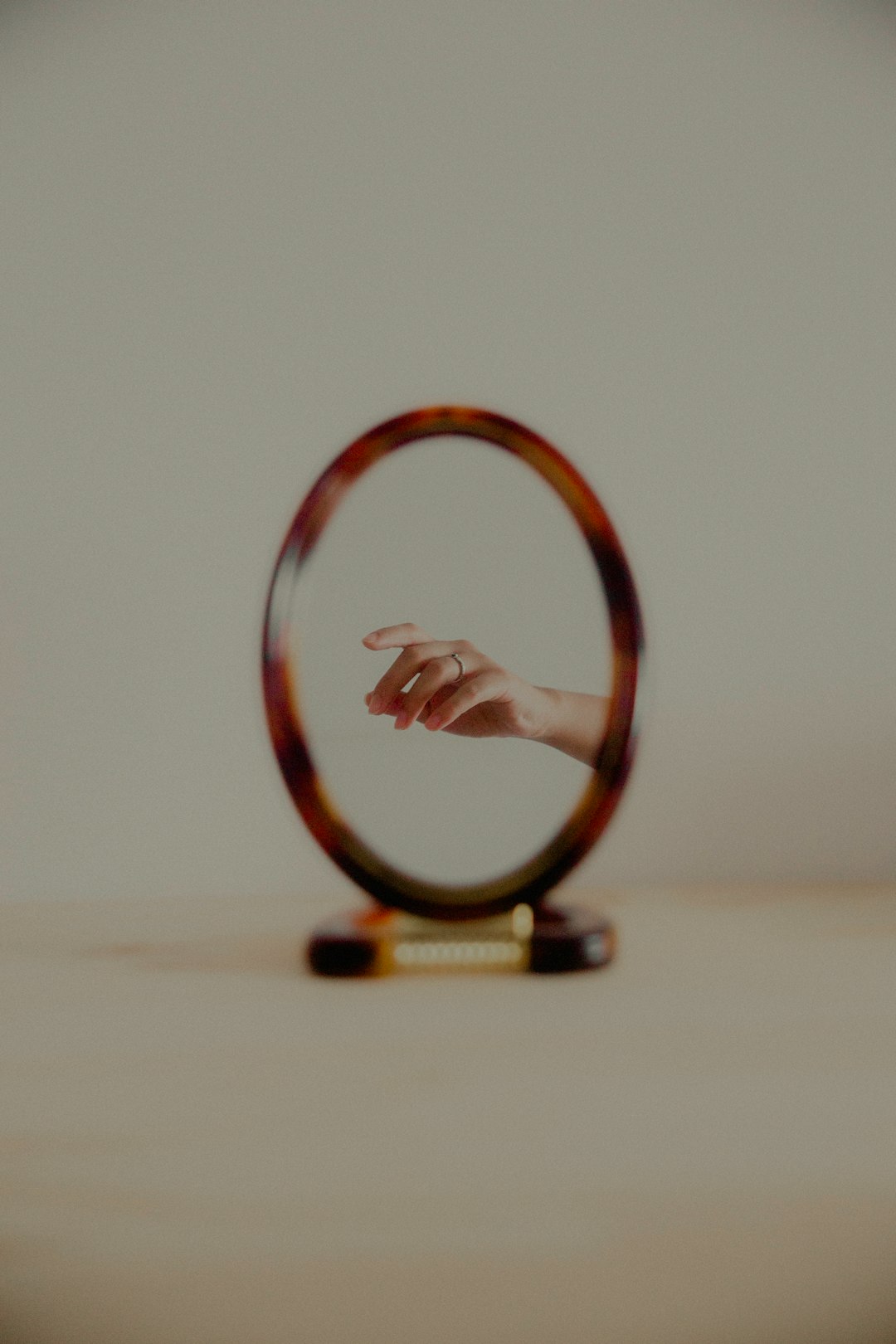Relationships form the cornerstone of human existence. Whether it’s the bond between friends, romantic partners, or family members, these connections shape much of our behavior, perceptions, and identity. One intriguing concept in psychology is the idea of ‘mirroring’—a phenomenon where individuals unconsciously emulate or reflect each other’s behaviors, attitudes, and even emotional states. But what does it mean to mirror ourselves in relationships, and how does it influence the way we relate to others? In this article, we’ll explore the psychological roots of mirroring, examine its impact on intimacy, and offer insights into how understanding this process can foster healthier, more authentic connections.
What Does It Mean to Mirror Ourselves in Relationships?
The concept of mirroring in relationships refers to the tendency for individuals to reflect each other’s verbal and nonverbal cues—body language, tone of voice, attitudes, and emotions—consciously or unconsciously. This doesn’t simply mean copying someone’s mannerisms; rather, it often involves projecting aspects of our own personality, insecurities, or desires onto our partners or friends.
This psychological ‘mirroring’ can manifest in several ways:
- Emotional mirroring: Adopting the emotional tone or mood of the other person, often to build rapport or empathy.
- Behavioral mirroring: Syncing gestures, posture, facial expressions, and habits, often subconsciously, to match those of someone close.
- Psycho-social mirroring: Reflecting the values, beliefs, or self-concepts—sometimes even projecting our own inner struggles onto another person.
Mirroring is not inherently negative; in fact, it is a natural component of human interaction. As social creatures, we are hardwired to seek connection and belonging, which often means aligning with those around us. However, excessive or unconscious mirroring can sometimes blur the lines between authentic self-expression and a distorted reflection that hinders true intimacy or personal growth.
The Psychological Roots of Mirroring
Mirroring has deep roots in developmental psychology. Attachment theorists like John Bowlby and Mary Ainsworth have long posited that our earliest experiences with caregivers set the stage for how we relate to others throughout our lives. When caregivers are responsive and attuned, children learn that their inner world is valid and understandable, forming a foundation for healthy mirroring and self-reflection in later relationships.
Another essential perspective comes from social neuroscience. The discovery of mirror neurons—brain cells that fire both when we act and when we observe the same action in another—suggests a biological basis for this phenomenon. Mirror neurons help explain why we might instinctively wince when we see someone else stub their toe or why laughter becomes contagious in groups. Through these mechanisms, mirroring serves as a tool for social learning, empathy, and connection.
Mirroring as a Pathway to Connection
The subtle art of mirroring begins in infancy. Babies learn to identify emotions and express themselves by watching and imitating their caregivers. As we mature, this capacity for imitation allows us to navigate the complexities of social life, foster rapport, and build a sense of shared identity. Think, for instance, of friends who finish each other’s sentences or couples who unconsciously adopt similar mannerisms over time. This behavioral synchrony can deepen trust and create an unspoken language of understanding.
From a psychological standpoint, effective mirroring helps us step outside ourselves, tune into someone else’s experience, and communicate on a profound, often nonverbal level. It’s no coincidence that mirroring is often used as a deliberate technique in psychotherapy and conflict resolution; when people feel seen and understood, barriers dissolve, and authentic dialogue becomes possible.
The Double-Edged Sword: When Mirroring Becomes Problematic
While mirroring can cultivate closeness and empathy, it can also become problematic. Sometimes, our propensity to reflect others morphs into unhealthy patterns, such as codependency, loss of identity, or emotional enmeshment. This occurs when the boundaries between self and other become blurred, making it difficult to distinguish whose feelings or aspirations we are actually experiencing.
Types of Unhealthy Mirroring
- Projective identification: A defense mechanism where we project unwanted traits or feelings onto another person and then subtly manipulate them to act those feelings out.
- Codependency: Sacrificing one’s own needs, desires, or values to maintain harmony or gain approval in a relationship, often losing sight of personal identity.
- Echoing attachment styles: Re-enacting familiar, unresolved childhood patterns (such as anxious or avoidant attachment) with partners or friends, perpetuating cycles of insecurity or distance.
For example, someone who struggles with self-worth may seek validation by mirroring the desires or expectations of their partner, inadvertently suppressing their authentic self. Over time, this can breed resentment, disconnection, or even burnout. Recognizing these patterns is essential for restoring healthy relational dynamics and personal well-being.
The Science Behind Mirroring: Insights from Research
Contemporary research in psychology and neuroscience supports the ubiquity and power of mirroring in human relationships. Studies show that individuals who naturally mirror the gestures and verbal styles of others are often rated as more likable, trustworthy, and empathetic.[1] This tendency, sometimes called the “chameleon effect,” serves as a nonverbal cue that signals interest and mutual understanding.
- Lakin et al. (2003) found that people who were mirrored during a conversation reported feeling closer and more positively disposed to the person mirroring them.
- Chartrand and Bargh (1999) first introduced the concept of the chameleon effect, demonstrating that people unconsciously mimic others to facilitate smoother social interactions.
- Neuroscientific studies using functional MRI (fMRI) have shown activation in regions associated with empathy and self-awareness when individuals mirror or observe actions performed by others.[2]
These findings underscore mirroring’s role not only in social cohesion but also in the development of emotional intelligence and self-understanding. Through the process of reflecting and being reflected, we refine our capacity for empathy and deepen our sense of self.
Mirroring and Self-Awareness: Who Are We Reflecting?
One of the most profound questions raised by the mirroring phenomenon is, “Who am I in this relationship?” If we unconsciously mirror those around us, to what extent are our thoughts, feelings, and behaviors truly our own? And does mirroring dilute our sense of identity—or can it heighten self-awareness, offering a unique lens through which to examine ourselves?
Social psychologist Carl Rogers, known for his humanistic approach, believed that close relationships function as mirrors, enabling us to see both our strengths and our blind spots. Through the reactions, feedback, or even criticisms of others, we gain new perspectives and challenge self-imposed limitations. In this sense, mirroring can be an opportunity for growth, provided we approach it with self-reflection and intentionality.
Risks of Losing the Self
Problems arise when mirroring is used as a defense against vulnerability. If we become so absorbed in the reflected image of our partner that we lose contact with our own values or ambitions, the relationship may feel hollow or one-sided. The key is to balance connection with autonomy—to remain open to influence while staying rooted in self-knowledge.
How Mirroring Shapes Romantic Relationships
Romantic partnerships, with their blend of passion, intimacy, and vulnerability, represent the ultimate arena for mirroring dynamics. From first dates, where we naturally seek common ground, to long-term marriages, where couples begin to “read” each other’s moods with remarkable accuracy, mirroring can foster bonding and mutual satisfaction.
Yet, the very mechanisms that breed closeness can also pave the way for conflict, especially when partners unconsciously replay childhood dynamics or seek validation through imitation. Consider these common scenarios:
- A partner who grew up in a critical environment mirrors this criticism, inadvertently creating distance.
- One person suppresses their needs to match the emotional rhythm of the other, leading to frustration or loss of self.
- Cyclical arguments occur when each partner projects their insecurities onto the other, leading to mutual misunderstanding.
Healthy Mirroring vs. Unhealthy Dependence
Healthy mirroring involves empathy, responsiveness, and the capacity to see and accept the other as they are. It is a dance of attunement without self-abandonment. Unhealthy mirroring, in contrast, is marked by compliance, self-negation, or manipulation.
Relationship experts encourage couples to cultivate both self-awareness and other-awareness—to reflect on their individual needs and boundaries while remaining open and responsive to their partner. The healthiest relationships are those where both partners can express their authentic selves and experience mutual growth, rather than disappearing into the mirrored image of the other.
Mirroring in Friendships and Family Bonds
Mirroring isn’t confined to romantic relationships. Friendships and family bonds are shaped by the same currents of reflection and projection. Siblings may model their reactions based on each other’s moods; parents may see echoes of their own traits—whether cherished or criticized—in their children.
- Peer groups: Adolescents, in particular, are highly sensitive to peer one another’s feedback, adjusting their behavior, language, and style to gain acceptance.
- Parent-child dynamics: Children learn emotional regulation, conflict resolution, and self-esteem through parental feedback—positive mirroring builds confidence, while negative or inconsistent mirroring can contribute to anxiety or doubt.
Recognizing these patterns can offer valuable insights into family dynamics and help break intergenerational cycles of misunderstanding or emotional neglect.
Practical Strategies: Cultivating Healthy Mirroring in Relationships
Building authentic, resilient relationships involves both embracing the benefits of mirroring and guarding against its pitfalls. Below are some actionable strategies to nurture healthy mirroring while preserving individuality:
-
Develop Self-Awareness
- Regularly check in with your own values, needs, and aspirations. Ask yourself, “Am I acting in a way that feels true to who I am, or am I trying to fit an image?”
- Practice mindfulness and introspection as tools for distinguishing your emotions from those around you.
-
Communicate Openly
- Share your thoughts and feelings honestly with your partner or friend—even (and especially) when they differ from theirs.
- Encourage feedback and create space for mutual expression without fear of judgment.
-
Respect Boundaries
- Recognize and honor the differences between you and the other person. Diversity in thoughts, emotions, and preferences strengthens relationships.
- Respond rather than react to emotional cues—empathy doesn’t require absorption.
-
Seek Professional Guidance
- If mirroring patterns are causing distress or harming your sense of self, consider consulting a therapist who can help you disentangle your own needs from those of others.
-
Foster Individual Growth
- Engage in hobbies, friendships, and pursuits outside of the relationship to cultivate a richer sense of self.
- Encourage your loved ones to do the same—growth happens both together and apart.
When Mirroring Enhances – and Undermines – Authenticity
At its best, mirroring allows us to feel known, understood, and safe. It provides the foundation for empathy, learning, and deep sexual or emotional intimacy. Yet, unchecked, it can drive us to seek validation outside ourselves, erode boundaries, and foster dependence rather than connection. The challenge lies in striking a conscious balance—embracing reflection as a path to self-knowledge, not a substitute for it.
Ironically, the journey toward genuine relationships often begins with better understanding our own mirrors—those stories, habits, and vulnerabilities we bring to the table. Only by recognizing the interplay between self and other can we nurture relationships where both partners, friends, or family members are fully seen in all their complexity.
Conclusion: Reflections on the Mirrors in Our Lives
The question, “Do we mirror ourselves in relationships?” invites us to look deeper—past the surface of easy answers, into the subtle dance of connection and individuality. The answer is a resounding yes: We are both mirrors and the mirrored, shaping and being shaped by every close bond we form. Awareness of this interplay can open doors to empathy, deepen self-understanding, and enrich the way we love, parent, and befriend.
As you reflect on your relationships, ask yourself: Where am I reflecting my authentic self, and where am I merely echoing those around me? How can I honor my own needs and boundaries while offering attunement and empathy to others? By living these questions, we not only build healthier relationships—we rediscover ourselves, one reflection at a time.
References:
- Lakin, J.L., Jefferis, V.E., Cheng, C.M., & Chartrand, T.L. (2003). The Chameleon Effect as Social Glue: Evidence for the Evolutionary Significance of Nonconscious Mimicry. Journal of Nonverbal Behavior, 27(3), 145–162.
- Iacoboni, M., et al. (1999). Cortical mechanisms of human imitation. Science, 286(5449), 2526–2528.





